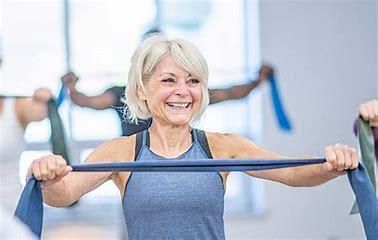Home Exercise Programs
Home exercise programs provide elderly individuals with a wide range of physical, mental, and emotional benefits. They offer a convenient, affordable, and flexible way to maintain independence, improve physical fitness, and boost overall well-being. By incorporating exercises that focus on strength, balance, flexibility, and cardiovascular health, seniors can enhance their quality of life, reduce the risk of falls and injury, and manage chronic conditions more effectively. Regular exercise also fosters a sense of accomplishment, self-esteem, and social connection.

Home exercise programs offer numerous benefits, especially for elderly individuals. They can improve physical health, mental well-being, and overall quality of life while being flexible and
convenient. Here are some of the key benefits of home exercise programs for seniors:
- Increased Strength and Muscle Mass: Regular exercise helps maintain and build muscle strength, which is crucial for performing everyday activities such as standing up, walking, and carrying objects. Strength training also helps combat muscle loss that naturally occurs with aging (sarcopenia).
- Better Balance and Coordination: Balance exercises help improve stability, reducing the risk of falls, which is a significant concern for elderly individuals. Exercises like leg raises, heel-totoe walking, and balance standing can make a big difference.
- Flexibility and Range of Motion: Stretching and flexibility exercises help keep the joints mobile and reduce stiffness. Improved flexibility helps seniors stay agile and independent.
- Enhanced Cardiovascular Health: Aerobic exercises such as walking, marching in place, or dancing help improve heart health, circulation, and lung capacity, reducing the risk of heart disease and stroke.
- Weight Management: Regular exercise helps maintain a healthy weight, reducing the risk of obesity-related conditions such as diabetes, high blood pressure, and joint pain.
- Better Bone Health: Weight-bearing exercises (e.g., walking, strength training) help increase bone density, which is important for preventing osteoporosis and fractures.
- Reduced Risk of Depression and Anxiety: Exercise is a natural mood booster. Physical activity releases endorphins (the body's feel-good chemicals), which can alleviate feelings of depression and anxiety. It also helps reduce stress levels.
- Cognitive Benefits: Physical activity has been shown to improve brain function, including memory, focus, and overall cognitive performance. For seniors, regular exercise can help delay the onset or progression of dementia and Alzheimer's disease.
- Increased Self-Confidence: As seniors become stronger, more mobile, and capable of performing daily tasks independently, their confidence and self-esteem improve.
- Improved Sleep: Regular physical activity can help regulate sleep patterns, leading to better rest and more energy during the day.
- Improved Functional Capacity: Strengthening muscles and improving balance helps seniors maintain independence in daily activities, such as climbing stairs, walking, grocery shopping, and carrying bags. It allows them to live more comfortably and safely at home.
- Reduced Dependence on Caregivers:
By improving their physical abilities, seniors may require less assistance from caregivers for activities like bathing, dressing, or moving around, which can enhance their quality of life.
- Chronic Disease Management: Regular exercise helps manage chronic health conditions such as arthritis, diabetes, hypertension, and osteoporosis. It can reduce the severity of symptoms and improve overall quality of life.
- Prevention of Age-Related Decline:
Exercise helps slow the aging process by maintaining muscle strength, flexibility, and bone density. It also contributes to maintaining cognitivehealth and preventing diseases like diabetes and heart disease.
- Safer Environment: Exercising at home reduces the risk of injury that can occur in a gym setting, such as falling or overexertion in front of others. Seniors can take it at their own pace and rest as needed.
- Customizable to Individual Needs: Home workouts can be tailored to the individual’s abilities, preferences, and schedule. This makes it easier to stick to a routine, as seniors can choose exercises that work for their fitness level and goals.
- Personalized Modifications:
If an exercise causes discomfort or pain, it can be easily modified or substituted with a gentler version, ensuring that seniors stay safe and comfortable while still benefiting from the workout.
